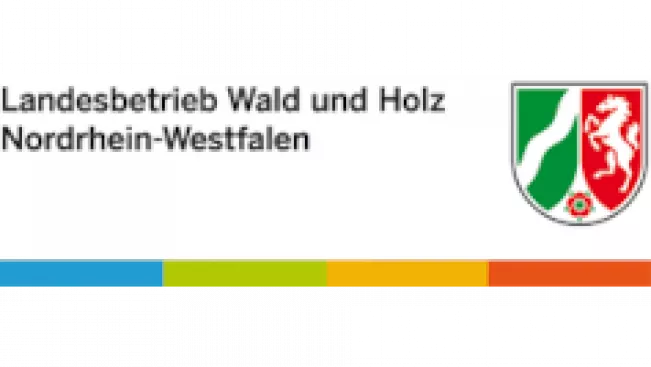GARRULUS

Forschungsprojekt im Überblick
Fachbereiche und Institute
Förderungsart
Zeitraum
01.07.2021 to 31.12.2022
Projektleitung an der H-BRS
Projektbeschreibung
Problem
Due to the lack of rainfall in recent years in Germany (as well as in other parts of Europe), the spruce bark beetle has become rampant. The beetles infest spruce forests by boring through the bark to find not only nutrients but also a place to mate and lay their eggs. In addition, they release pheromones that attract other beetles to the tree, which thereby also infest it. After about 2-5 weeks, the beetles migrate to another tree and the process is repeated.
As a result, the infested trees die and/or develop a kind of fungus that obstructs the upward flow of water, which leads to the death of the foliage. In NRW alone, an estimated 30 % of all spruce trees are either already damaged or infested by the omnipresent beetles. As a result, about 70 - 100,000 hectares of spruce forests must be reforested to mitigate the damage caused by the beetles.
In the last two years alone, the state of NRW has suffered the most beetle damage among the German states, with a volume of over 18 million cubic metres. A European comparison also shows that the damage caused by the spruce bark beetle in Germany is greater than in the seven other severely affected EU countries combined.

Existing solutions
Some solutions to deter the spruce bark beetle are currently being used by foresters across Germany/Europe with varying degrees of effectiveness.
In one approach, the beetles' reproductive cycle is followed. At the beginning of each cycle, so-called trap trees are used to attract the beetles and thus remove them from the spruce forests.
Another approach is to fell infested tree sections. This is to stop the spread of the beetles.
Pheromone traps can also be set up to attract the beetles.
These methods vary in effectiveness and always aim to deter as many beetles as possible and keep them away from further spruce trees. However, they are not sustainable and guaranteed methods for preserving spruce forests. Moreover, the extent of the damage these invasive beetles have already caused requires measures to reforest dead areas - and faster than the progression of the infestation.
Reforestation is traditionally done by replanting spruce in the damaged forest areas. Replanting trees is a laborious and very time-consuming task. Moreover, the lack of planters and foresters leads to much higher costs for replanting. It is estimated that for every newly planted Hector in NRW, costs of 5000 EUR are incurred.
Our solution approach in the Garrulus project
Motivated by the problems described above and their direct impact on trees, the climate and the economy, as well as by the lack of a fully scalable, timely and cost-effective solution, we are taking a different approach in the Garrulus project.
The aim of Garrulus is to develop a fast, reliable, scalable and cost-effective prototype for the reforestation of degraded areas in German forests. The proposed method is to develop and build a prototype unmanned aerial vehicle (UAV). This will be able to scan a damaged area and map the underlying terrain to accurately determine the extent of the damaged forest area.
The mapping process, together with complementary developed artificial intelligence, will provide insights into optimal locations for replanting trees. In addition, valuable data is collected for monitoring forest growth. The UAV will be equipped with a special seed-dispensing mechanism that will drop seeds at the desired (optimal) locations. A prototype of the drone and the delivery mechanism will be developed and tested for functionality in a forest environment.
In the process, we are working together with the staff of the Centre for Forest and Timber Management (Arnsberg).
Ergebnisse
Exemplary aerial photographs with the UAV
(from a preliminary study)



Wissenschaftliche Mitarbeiterinnen und Mitarbeiter
Externe Kooperationspartnerinnen und Kooperationspartner

Finanzierung
